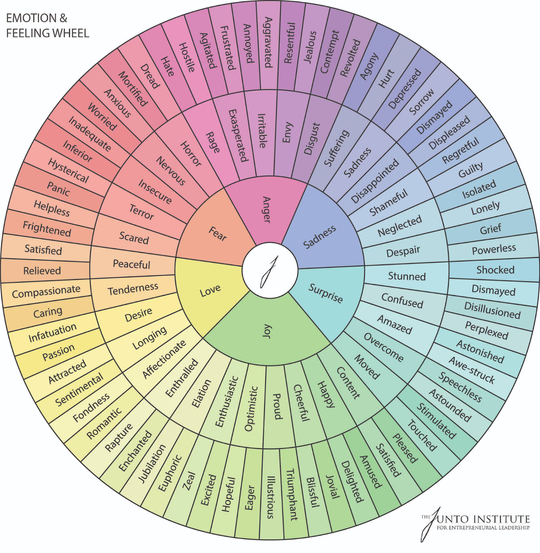
When I was 6 years old, my favourite colour was purple. Now, when people used to ask me, I wanted them to know that this shade of purple is what I was talking about. Purple was still my favourite colour at 12, but not the purple that I mentioned as a 6 year old. Fast forward to now, and as you might have guessed, purple is still my favourite colour, but what’s new is that now I know, that Ii shouldn’t be calling it purple, it is lavender and my favourite colour at 6 wasn’t purple either, it was lilac and at 12, it was indeed purple. I realised how I had been using the same word for different colours.
As a revelation, we’ve been doing that with our feelings as well. Upon being asked how you are feeling, one might just go, “sad,” “happy,” “depressed.” It wouldn’t have been a problem if we were still talking about colours, but emotions, one ought to know that. Emotional awareness acts as a guide to help us know what we want and do not want. It is the key to building more satisfying and fulfilling relationships. If one is aware of their feelings, they can resolve conflicts in a better manner. A key to enhance emotional awareness is increasing our Emotional Vocabulary.
Emotional vocabulary refers to the language which accurately describes what we are feeling. It is more than feeling “good” or “bad.” Let us look at 5 ways to increase our Emotional Vocabulary.
1. Reading

Remember how our teachers used to tell us back in school to read as much as we can as it helps to improve vocabulary. Well, that is true for emotional vocabulary too. Research confirms that kids and adolescents who read have greater emotional vocabulary than the ones who do not. Even as an adult, reading helps us to develop our emotional vocabulary, as well as empathy. A Swedish study in 2020 confirmed that there is a clear relationship between reading habits and the number of emotion words, both negative and positive. What was also interesting about the findings of the study was that girls produced more words than boys (This may be related to the finding that girls are more expressive than boys).
2. Feelings Wheel

The Emotion and Feeling Wheel is another way to increase emotional vocabulary. It is also the easiest way to identify a feeling. For example, let us say that you are experiencing anger, but you aren’t exactly sure whether it is anger. Perhaps, it is rage or disgust or irritability. Maybe it is closer to irritability, so now narrow it down to annoyance or aggravation. The last step is to decide which one out of these is it that you are feeling. It is an effective manner of identifying your emotions and building the reservoir of emotional words.
3. Emotional Journal
We all know the good ol’ method of journaling as a way of venting out our emotions. What if we tell you that it also helps you to build your emotional vocabulary! An Emotional Journal would differ from a journal in the way that an emotional journal is just for your emotions. Here, you can skip writing about your day, the things you did or the things you are planning to do. The focus here is more on the affective aspect of your day. How did you feel when you did a certain chore? What made you feel that? You can do this every night or even if you are experiencing an emotion at any point of the day.
4. Pause and reflect
Take some time out to just pause and reflect on your emotions. Ask yourself, “How did you feel when my boss yelled at me during the meeting?” or “What emotions did I experience when my S.O cooked my favourite meal?” Replace statements such as, “I felt bad” or “I felt good” to statements such as “I felt frightened” and “I felt blissful.” You can find a list of more emotional words here.
5. Communicate with people around
As much as it is important to reflect inwards, social interaction is also an important component of emotional vocabulary. If you are confused about something that you felt at work, think about what caused that. Try to identify the emotions that you felt and think of an effective way to communicate the emotions to your coworkers or your boss.Similarly, at home use feeling words into your statements. For example, “I feel — about —-”, “I feel — when you —”. This is a powerful way of putting across what you feel to your family.
Anne Frank was right when she said, “But feelings can’t be ignored, no matter how unjust or ungrateful they seem.” Emotions need to be described and addressed, positive or negative. After all, they are what make us humans, unpleasant ones too.


